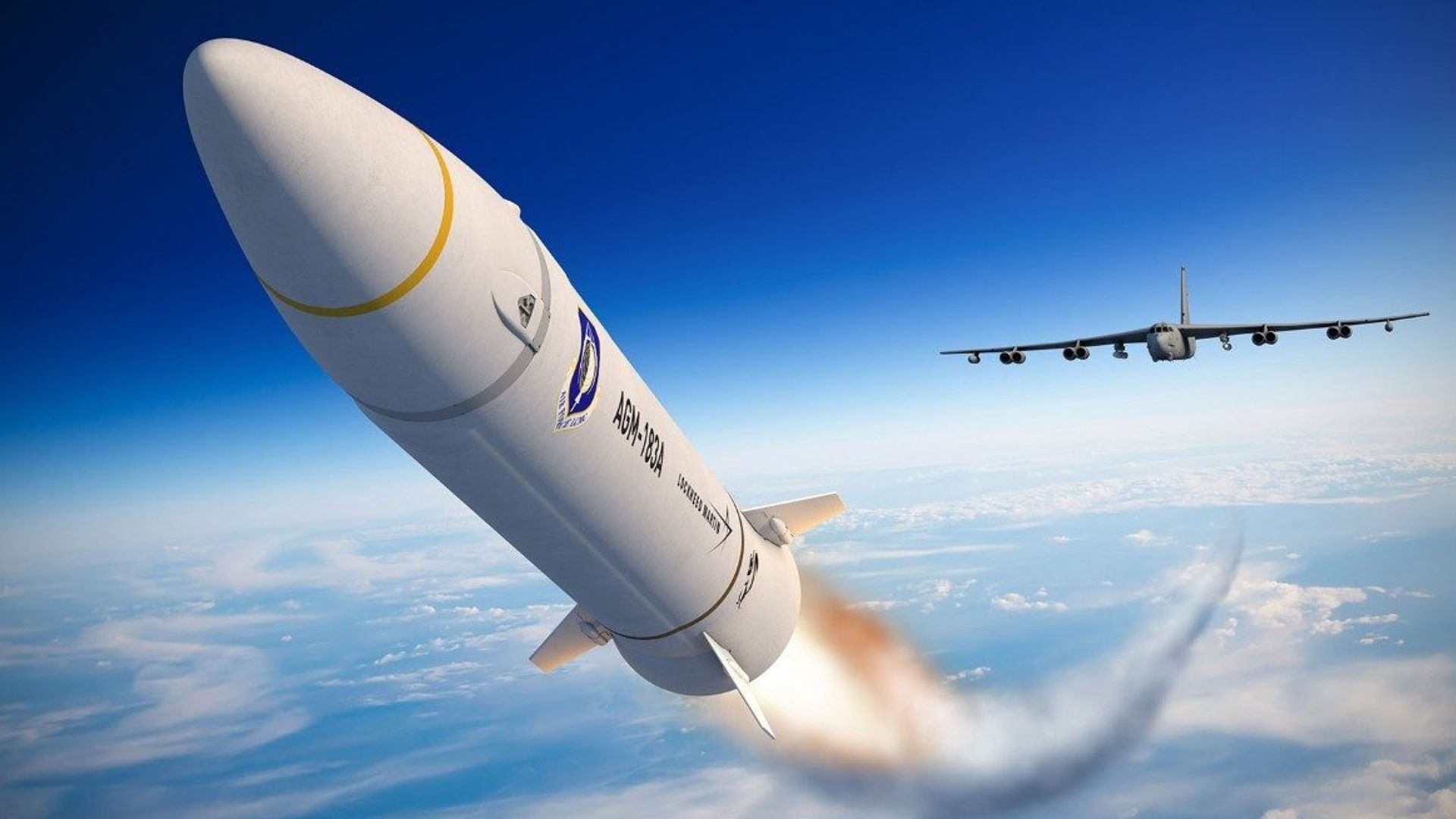
US fires off hypersonic missile test amid pressure from China, Russia
Media Landscape
This story is a Media Miss by the left as only 8% of the coverage is from left leaning media.
Learn more about this dataLeft 8%
Center 25%
Right 67%
[RYAN ROBERTSON]
IN WHAT MAY BE ITS FINAL TEST, THE U.S. AIR FORCE FIRED A LOCKHEED MARTIN AIR LAUNCHED RAPID RESPONSE WEAPON–A VERSION OF A HYPERSONIC MISSILE FROM A B-52 BOMBER OVER THE PACIFIC OCEAN NEAR GUAM.
SO FAR, THE AIR FORCE IS BEING TIGHT-LIPPED ON HOW FAST THE MISSILE FLEW OR REALLY ANY SPECIFIC DETAILS.
BUT WE DO KNOW FROM PREVIOUS TESTS IT’S CAPABLE OF REACHING SPEEDS FIVE TIMES THE SPEED OF SOUND.
STILL, THE AIR FORCE SAID THE LATEST ARRW TEST PROVIDED IT WITH VALUABLE DATA TO ANALYZE AND WILL FURTHER HYPERSONIC WEAPONS RESEARCH.
THE EXPERIMENTAL TEST LAUNCH USED AN “ALL-UP” ROUND, MEANING THE GLIDE BODY AND ROCKET BOOSTER WERE CONNECTED.
AND DESPITE THE AIR FORCE SAYING THE TEST WAS A “SUCCESS” THE FUTURE OF THE AIR FORCE’S HYPERSONIC ATTACK CRUISE MISSILE IS A LITTLE UNCERTAIN
THE U.S. AIR FORCE’S PROPOSED FISCAL YEAR 2025 BUDGET REQUESTED MORE THAN $500 MILLION TO KEEP DEVELOPING THE WEAPON BUT NO FUNDS TO ACTUALLY PURCHASE ANY
THE AIR FORCE SAYS A FINAL DECISION ON THE FUTURE OF THE AIR-LAUNCHED RAPID RESPONSE WEAPON PROGRAM WILL BE BASED ON THE LATEST FLIGHT.
HERE’S WHY HYPERSONIC MISSILES ARE IMPORTANT. FOR STARTERS, CHINA AND RUSSIA HAVE THEM, AND THE U.S. DOESN’T… SO THAT’S A BIT OF A SORE SPOT FOR LAWMAKERS AND A CAPABILITY GAP FOR THE MILITARY.
AS FAR AS THE ACTUAL MISSILES THEMSELVES–HYPERSONIC MISSILES CAN BE LAUNCHED FAR ENOUGH AWAY THAT ENEMY RADAR WON’T SEE THE LAUNCH. HYPERSONIC MISSILES TRAVEL AT SPEEDS OF AT LEAST MACH 5…OR FIVE TIMES THE SPEED OF SOUND. SOME HAVE REPORTEDLY REACHED SPEEDS OF MACH 8.
WHAT SETS HYPERSONIC MISSILES APART FROM BALLISTIC MISSILES–IS THEY’RE ALSO MANEUVERABLE…MAKING THEM HARDER TO DEFEND AGAINST.
IN 2017, MOSCOW ADDED THE KINZHAL MISSILE TO ITS ARSENAL.
AND RUSSIA REPORTEDLY BECAME THE FIRST NATION EVER TO USE HYPERSONIC WEAPONS IN WAR, WHEN IT LAUNCHED THEM AT UKRAINE. US PATRIOT MISSILE BATTERIES WERE ABLE TO DEFEND AGAINST THEM THOUGH.
IN 2019, CHINA UNVEILED THE DF-ZF HYPERSONIC GLIDE VEHICLE…IT’S THESE WEAPONS THAT HELP CONTRIBUTE TO CHINA BEING LABELED AS THE PRIMARY THREAT TO MARITIME SECURITY IN THE PACIFIC.





